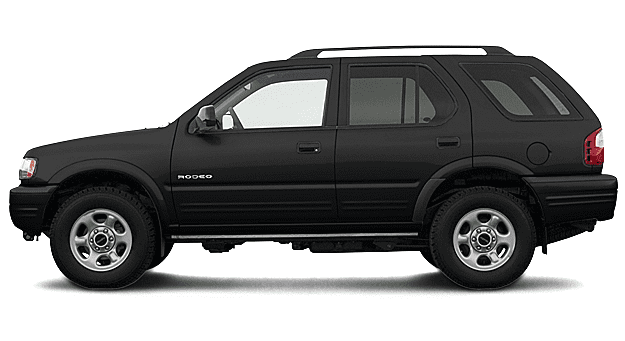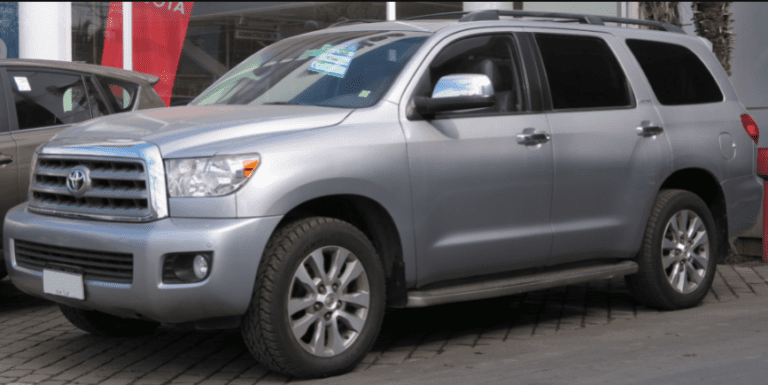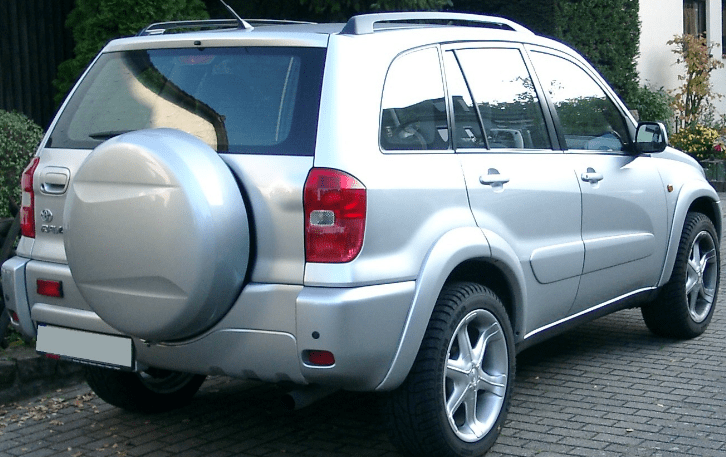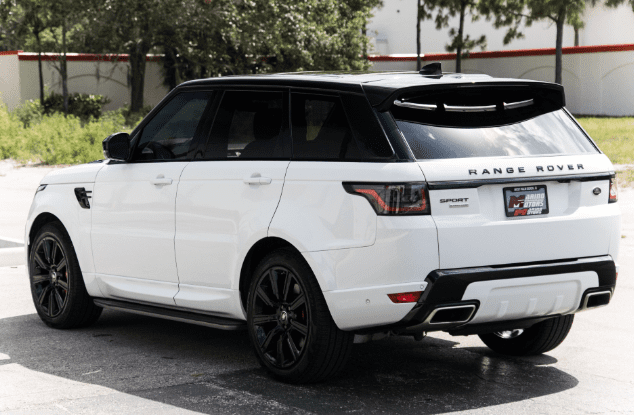[1998 – 2008] Isuzu Rodeo Transmission Problems & Repair Costs
Last Updated on September 25, 2023 by Robert Wilson
Isuzu Rodeo has been a popular choice among SUV enthusiasts for its rugged design and off-road capabilities.
In this article, we’ll delve into the problems that various Isuzu Rodeo models, ranging from 1998 to 2008, have faced, along with their respective solutions, recalls, repair costs, and more.
Whether you’re considering buying a used Isuzu Rodeo or already own one, this guide will equip you with essential knowledge to navigate potential challenges.
Isuzu Rodeo Problems by Model Year (1998-2008)
Here’s a breakdown of Isuzu Rodeo models from 1998 to 2008, highlighting specific issues and recalls, along with recommended solutions and repair costs:

| Year | Model | Common Issues | Recalls | Fixes | Repair Cost Range |
|---|---|---|---|---|---|
| 1998 | Rodeo | Transmission | – | Transmission rebuild/replacement | $1,000 – $3,500 |
| 2001 | Rodeo | Engine Misfire | – | Spark plug replacement | $150 – $300 |
| 2003 | Rodeo | Fuel Gauge | – | Fuel sender unit replacement | $250 – $500 |
| 2005 | Rodeo | Ignition Switch | – | Ignition switch replacement | $200 – $400 |
| 2008 | Rodeo | Suspension Noise | – | Suspension component inspection | $100 – $500 |
Best Isuzu Rodeo Models to Buy:
If you’re looking for a reliable Isuzu Rodeo, consider these top models and their average prices:
| Model | Year | Average Price Range |
|---|---|---|
| Rodeo | 2004 | $2,500 – $4,000 |
| Rodeo | 2006 | $3,000 – $5,000 |
| Rodeo | 2008 | $3,500 – $5,500 |
Worst Isuzu Rodeo Years to Avoid:
Here are some problematic Isuzu Rodeo models that you might want to steer clear of:
| Model | Year |
|---|---|
| Rodeo | 2001 |
| Rodeo | 2003 |
| Rodeo | 2007 |
Used Value of Isuzu Rodeo by Model and Year:
Find below the used value estimates for Isuzu Rodeo models based on different years:
| Model | Year | Price Range |
|---|---|---|
| Rodeo | 2002 | $1,500 – $3,000 |
| Rodeo | 2004 | $2,000 – $4,000 |
| Rodeo | 2006 | $2,500 – $5,000 |
Reliability Comparison with Other Models:
Comparing Isuzu Rodeo’s reliability with similar vehicles:
| Model | Reliability Score Range | Explanation |
|---|---|---|
| Isuzu Rodeo | 6.5 – 7.5 | Generally reliable, though certain model years may have specific issues. |
| Honda CR-V | 8.0 – 9.0 | More reliable in terms of engine and transmission performance. |
| Toyota RAV4 | 7.0 – 8.5 | On par with Isuzu Rodeo; offers better fuel efficiency and resale value. |
Isuzu Rodeo Common Problems, Recalls & Reliability
Now in this part, we are going to list down some of the most common problems encountered by Isuzu Rodeo owners, along with insightful solutions and tips for maintaining reliability. From oil-related misfires to tricky 4WD light issues, we’ve got you covered.
Oil in Spark Plug Tubes May Cause Misfire
One of the challenges that 2001 Isuzu Rodeo owners might encounter is oil seeping into the spark plug tubes, leading to engine misfires. This issue often stems from worn-out valve cover gaskets that fail to keep the oil where it belongs. The result? Erratic engine performance, reduced fuel efficiency, and increased emissions. To address this problem, it’s crucial to replace the damaged gaskets promptly.
Limited Slip Differential Fluid Breakdown
Picture this: you’re taking a corner in your 2002 Isuzu Rodeo, and you notice an unsettling chattering sensation. This phenomenon is often attributed to the breakdown of the limited slip differential fluid. Over time, this fluid loses its viscosity, causing uneven distribution and leading to chatter during cornering. Regular fluid checks and changes can help prevent this issue, ensuring a smoother ride around corners.
Valve Train Noise Due to Varnish Buildup
The 2003 Isuzu Rodeo might suffer from a pesky valve train noise caused by varnish buildup. As the engine operates, varnish accumulates on the valve components, leading to noisy operation. Regular maintenance, including the use of high-quality fuel additives, can help mitigate varnish buildup and keep your engine humming quietly.
Fuel Injector “Leakdown” and Long Crank Time
For owners of the 2004 Isuzu Rodeo, a frustrating issue can arise with the fuel injectors. Fuel injector “leakdown” occurs when the injectors don’t seal properly, causing fuel pressure to drop and resulting in extended crank times during startup. If left unattended, this problem can strain your starter and battery. Addressing the issue involves diagnosing and replacing the faulty injectors promptly.
Varnish Buildup in Engine Leading to Ticking Noise
Owners of the 2005 Isuzu Rodeo might notice a ticking noise emanating from the engine. This ticking noise is often linked to varnish buildup on the valve lifters and camshafts. The varnish restricts proper movement, causing the ticking sound. Regular oil changes and the use of high-quality synthetic oil can help prevent this issue, keeping your engine running smoothly and quietly.
Updated Gasket for Leaking Front Hub
In the 2006 Isuzu Rodeo, a common problem is a leaking front hub due to worn-out gaskets. This issue can lead to grease leakage and potential damage to the hub assembly. The good news is that Isuzu released an updated gasket that effectively addresses this problem. Installing the updated gasket ensures that the front hub remains free from leaks, prolonging the life of the components.
Wiring Damaged by Door Checker
The 2007 Isuzu Rodeo faces a unique issue: wiring damage caused by the door checker. Over time, the wiring harness connecting the door to the vehicle can become frayed or damaged due to constant movement. This can result in issues ranging from malfunctioning power windows to non-functional door locks. Regular inspection and maintenance of the wiring can help prevent this problem.
Faulty Vacuum Solenoid & Persistent 4WD Light
In the 2008 Isuzu Rodeo, a frustrating problem is a faulty vacuum solenoid that causes the 4WD light to stay illuminated. This issue can lead to confusion and potential drivetrain problems. Addressing this requires diagnosing the vacuum solenoid and replacing it if necessary. Keeping the 4WD system in optimal condition ensures a smooth and trouble-free driving experience.
FAQs
What Causes Oil to Seep into Spark Plug Tubes?
Oil seeping into spark plug tubes in the Isuzu Rodeo is often caused by worn-out valve cover gaskets. These gaskets lose their ability to seal properly, allowing oil to escape and enter the spark plug tubes.
How Can I Prevent Limited Slip Differential Fluid Breakdown?
Regular checks and changes of the limited slip differential fluid can help prevent breakdown and the resulting chattering sensation during cornering in the Isuzu Rodeo.
Can Varnish Buildup Be Prevented in the Valve Train?
Using high-quality fuel additives and performing regular maintenance, including using synthetic oil, can help prevent varnish buildup in the valve train of the Isuzu Rodeo.
Why Does the 2004 Isuzu Rodeo Experience Long Crank Times?
The 2004 Isuzu Rodeo may experience long crank times due to fuel injector “leakdown.” Faulty injectors fail to seal properly, causing fuel pressure to drop and leading to extended crank times during startup.
What’s the Solution for Ticking Noise in the 2005 Isuzu Rodeo Engine?
Regular oil changes and the use of high-quality synthetic oil can help prevent varnish buildup on valve lifters and camshafts, addressing the ticking noise issue in the 2005 Isuzu Rodeo engine.
How Can I Address Wiring Damage in the 2007 Isuzu Rodeo?
Regular inspection and maintenance of the wiring harness connecting the door to the vehicle can help prevent wiring damage caused by the door checker in the 2007 Isuzu Rodeo.
Fix Isuzu Rodeo Fuel Pump Problems
Experiencing fuel pump problems in your Isuzu Rodeo can be frustrating, but with the right guidance, you can resolve these issues and enjoy a smooth ride once again.
Here are some common fuel pump problems and how to fix them:
Fuel Pump Not Priming
Problem:
If your Isuzu Rodeo’s fuel pump is not priming when you turn the ignition key, it may lead to starting difficulties and stalling issues.
Solution:
- Check the Fuel Pump Relay: A faulty fuel pump relay could prevent the pump from priming. Locate the relay in your vehicle’s fuse box and replace it if necessary.
- Inspect Wiring and Connections: Check for any damaged or corroded wiring and connections that might be disrupting the power supply to the fuel pump. Repair or replace as needed.
- Test the Fuel Pump: Use a fuel pressure gauge to test the pressure at the fuel rail. If the pressure is too low or nonexistent, the fuel pump might need replacement.
Engine Stalling at Low Speeds
Problem:
Experiencing engine stalling when driving at low speeds could indicate a fuel pump problem.
Solution:
- Check the Fuel Filter: A clogged fuel filter can restrict fuel flow, leading to stalling. Replace the fuel filter if it’s dirty or blocked.
- Inspect the Fuel Pump: The fuel pump might be failing or not delivering a consistent flow of fuel. Test the fuel pump’s pressure and volume to determine if it’s functioning properly.
Engine Misfires and Hesitation
Problem:
Engine misfires and hesitation during acceleration can be caused by insufficient fuel delivery from a malfunctioning fuel pump.
Solution:
- Examine the Fuel Injectors: Clogged or faulty fuel injectors can contribute to misfires. Clean or replace the injectors as needed.
- Check for Fuel Contamination: Contaminated fuel can affect engine performance. Drain the fuel tank and refill it with clean, high-quality fuel.
- Inspect the Fuel Pressure Regulator: A faulty fuel pressure regulator can disrupt the fuel supply. Test and replace the regulator if required.
FAQs:
How do I know if my Isuzu Rodeo has a fuel pump problem?
Common signs include difficulty starting the engine, engine stalling, poor acceleration, and unusual engine sounds. If you notice any of these symptoms, there’s a possibility of a fuel pump issue.
Can I fix the fuel pump problems myself?
While some basic troubleshooting can be done by car owners, diagnosing and fixing complex fuel pump problems might require professional expertise. It’s advisable to consult a certified mechanic for accurate diagnosis and repair.
What can cause fuel pump failure in Isuzu Rodeo?
Fuel pump failure can be caused by various factors, including electrical issues, fuel contamination, overheating, and general wear and tear. Regular maintenance and using high-quality fuel can help prevent premature fuel pump failure.
How often should I replace the fuel filter in my Isuzu Rodeo?
It’s recommended to replace the fuel filter every 30,000 to 40,000 miles to ensure proper fuel flow and prevent clogs that can affect engine performance.
Is preventive maintenance important for avoiding fuel pump problems?
Yes, regular preventive maintenance, such as changing the fuel filter, keeping the fuel tank clean, and using quality fuel, can significantly reduce the risk of fuel pump problems and extend the lifespan of your Isuzu Rodeo’s fuel system.
Can a faulty fuel pump affect my Isuzu Rodeo’s fuel efficiency?
Yes, a malfunctioning fuel pump can disrupt the fuel delivery, leading to inefficient combustion and decreased fuel efficiency. Fixing the fuel pump issue can help restore your vehicle’s fuel efficiency.
Dealing with Isuzu Rodeo fuel pump problems doesn’t have to be daunting. By understanding the common issues and their solutions, you can effectively address fuel pump-related problems and ensure your vehicle’s optimal performance. Whether it’s a fuel pump not priming, engine stalling, or engine misfires, following the expert tips outlined in this guide will help you keep your Isuzu Rodeo running well.
Fix Isuzu Rodeo EGR Valve Problems
Is your Isuzu Rodeo exhibiting unusual symptoms or reduced performance? It’s time to address the EGR valve problems.
Here’s how you can tackle them effectively:
1. Symptoms of EGR Valve Problems
Identifying the symptoms is the first step towards diagnosing EGR valve issues. Look out for signs such as rough idling, decreased fuel efficiency, engine knocking, and even the illumination of the Check Engine Light on your Isuzu Rodeo. If you notice any of these, it’s likely that your EGR valve requires attention.
2. Clean the EGR Valve
One of the primary reasons for EGR valve problems is carbon buildup. Over time, carbon deposits can accumulate, affecting the valve’s functionality. Cleaning the valve can often resolve this issue of your Isuzu Rodeo. You can use an EGR valve cleaner and a soft brush to gently remove the carbon deposits.
3. Inspect the Vacuum Hoses
Faulty vacuum hoses can also lead to Isuzu Rodeo EGR valve problems. Inspect the hoses for cracks, leaks, or blockages. Replace any damaged hoses to ensure proper vacuum pressure, which is essential for the EGR valve’s operation.
4. Check the EGR Valve Gasket
A worn-out or damaged EGR valve gasket can result in leaks, causing improper valve operation. Inspect the gasket and replace it if necessary. A new gasket will ensure a proper seal and prevent exhaust gases from escaping.
5. Test the EGR Valve Position Sensor
Modern Isuzu Rodeos are equipped with EGR valve position sensors. These sensors can fail over time, leading to incorrect readings and improper valve operation. Use a multimeter to test the sensor’s functionality and replace it if needed.
6. Replace the EGR Valve
If none of the above solutions prove effective, it might be time to replace the EGR valve altogether. Consult your Isuzu Rodeo‘s manual or seek professional assistance to ensure you’re choosing the correct replacement part. Installing a new EGR valve can often resolve persistent problems and restore your Isuzu Rodeo‘s overall performance.
FAQs
Q: Can I drive my Isuzu Rodeo with a faulty EGR valve?
A: It’s not recommended to drive with a faulty EGR valve as it can lead to reduced fuel efficiency, increased emissions, and potential engine damage.
Q: How often should I clean the EGR valve on my Isuzu Rodeo?
A: Cleaning intervals can vary based on driving conditions. However, it’s a good practice to inspect and clean the EGR valve annually or whenever you notice a drop in performance of your Isuzu Rodeo.
Q: Can a clogged EGR valve lead to engine overheating?
A: Yes, a clogged EGR valve can disrupt the air-fuel mixture, causing the engine to run hotter than usual. This can potentially lead to overheating.
Isuzu Rodeo Full Specifications:
For a detailed overview of Isuzu Rodeo specifications, refer to the table below:
| Model | Year | Engine | Horsepower | Transmission | Fuel Economy (City/Highway) |
|---|---|---|---|---|---|
| Rodeo | 2006 | 3.5L V6 | 250 hp | 5-speed auto | 16/22 mpg |
| Rodeo | 2003 | 2.2L 4-cyl | 120 hp | 5-speed manual | 19/24 mpg |
FAQs
- Q: What is the most common issue with Isuzu Rodeo?
- A: The most common problem reported is transmission issues, especially in the 1998 model.
- Q: Are there any recalls for Isuzu Rodeo?
- A: There have been various recalls over the years, mainly related to airbags and fuel system components.
- Q: How much does it cost to fix ignition switch problems?
- A: Ignition switch replacement can cost around $200 to $400, depending on the model year.
- Q: Which Isuzu Rodeo model year is known for engine misfires?
- A: The 2001 model year had frequent engine misfire complaints.
- Q: What is the recommended fix for fuel gauge issues?
- A: Fuel sender unit replacement is often suggested and costs around $250 to $500.
- Q: What are some reliable Isuzu Rodeo models to consider?
- A: The 2004, 2006, and 2008 models are generally considered more reliable options.
- Q: Is the Isuzu Rodeo a good off-road vehicle?
- A: Yes, the Isuzu Rodeo is known for its capable off-road performance and durability.
- Q: Are there any specific model years to avoid?
- A: The 2001, 2003, and 2007 models have been associated with more problems.
- Q: How does Isuzu Rodeo’s reliability compare to Honda CR-V?
- A: Honda CR-V is generally considered more reliable than Isuzu Rodeo.
- Q: What is the average price range for a 2006 Isuzu Rodeo?
- A: A 2006 Isuzu Rodeo can cost anywhere between $2,500 and $5,000, depending on its condition.
Isuzu Rodeo has had its share of issues over the years, from transmission troubles to engine misfires.
However, by choosing the right model year and staying informed about common problems, you can enjoy the rugged charm of this SUV without getting caught up in its downsides.
Always perform thorough research and consider the costs associated with potential repairs before making a purchase.



